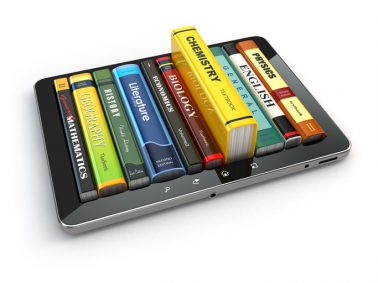
When it comes to educational content and learning, proponents of textbooks and advocates of technology probably agree on more than we might expect – everyone wants the best outcomes for students, after all. Gary Bryant, UK manager for ITSI, shares his industry insights, considering the debates around this topic and how schools can take advantage of both the traditional and the technological to satisfy all parties

At the same time, however, a Publishers Association survey found that over 63% of teachers could make better of textbooks use than they’re currently doing by taking a leaf out of the books of high-performing PISA jurisdictions like Singapore and Finland.
As the digital (r)evolution continues this seems to suggest that often schools are favouring versatile, technological solutions and downgrading the importance of ‘old-school’ written resources.
There are clear reasons for this trend:
Firstly, the use of video and other dynamic content has become more and more prevalent in recent years, with students able to access a wealth of information online in a variety of mediums that suit their learning needs and provide current, contextual details about specific topics.
Secondly, depending on the subject, the content included in textbooks can become out-of-date very quickly, meaning that schools must invest in a whole new set of copies on a regular basis – a costly process.
Thirdly, textbooks are frequently associated with loose pages of notes tucked inside the pages, or activities from the course text written up in exercise books, with no obvious link between the two, distracting from the learning experience.
Elements of the ‘traditional’
However, while these are all legitimate reasons for increasing the use of digital resources, it doesn’t mean that the textbook model needs to be abandoned. After all, textbooks provide a rich source of course material, including the basis of theory, relevant case studies and practice questions that allow for the consolidation of knowledge.
By using digital textbooks in the form of the ever-popular e-book format we can address some of the key issues faced by teachers and students. For example, while printed textbooks often had to be kept pristine for other class members, e-books can be made personal to the student, using highlights and annotations to consolidate the content with their own notes.
Teachers can also enrich the content with video, images, in-book assessments and links to other digital sources, all in one place, issued to each student in the class and, with a digital format, the level of investment is far lower, as the ‘book’ can be easily updated with more relevant content by the teacher.
When the future comes knocking
While technology has opened the door to a wealth of exciting innovation opportunities the influence of traditional methods of teaching and learning should not be underestimated.
By striking a balance between tablets and textbooks, students will have access to well-constructed resources that they can make their own, using all the information and detail there is to offer, in both book form and digitally.
Don’t forget to follow us on Twitter, like us on Facebook, or connect with us on LinkedIn!


Be the first to comment